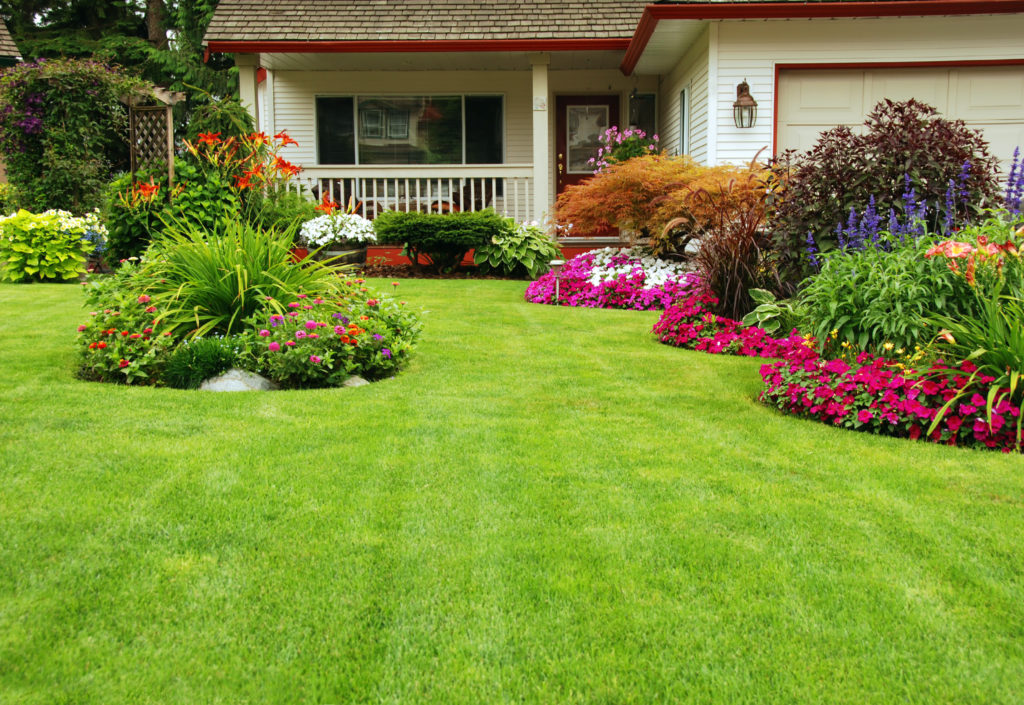

Summer Lawn Care: Keeping Grass Green in the Heat
Summer lawn care is one of the most important aspects of maintaining a lush, healthy lawn. The hot, dry conditions that characterize summer can quickly turn your vibrant green turf into a dull, brown patch of dying grass if proper practices aren’t followed. At Best Lawn Guy, we understand that summer brings specific challenges to your yard, and that’s why mastering the art of Summer Lawn Care is essential for any homeowner who wants their lawn to thrive even in peak heat.
Why Summer Lawn Care Is Different from Other Seasons
Unlike spring or fall, where cool temperatures and ample moisture promote natural lawn growth, summer presents a hostile environment for grass. The combination of intense sun, high temperatures, and reduced rainfall can dehydrate your soil and stress your turf. Summer lawn care requires a proactive strategy focused on moisture retention, mowing adjustments, and appropriate fertilization. Without this strategic approach, your lawn will struggle to survive, let alone look beautiful.
Understanding Grass Stress During Summer Months
A critical component of effective summer lawn care is understanding how grass reacts to heat and drought. Grass becomes stressed when it cannot access enough moisture, resulting in wilting, discoloration, and stunted growth. When exposed to continuous high temperatures, even resilient grass species begin to show signs of fatigue. By observing your lawn daily and recognizing early stress symptoms, you can implement effective summer lawn care techniques before permanent damage occurs.
Watering Wisely: The Key to Summer Lawn Care
Watering is perhaps the most vital part of any summer lawn care regimen. Proper watering can mean the difference between a green lawn and a brown wasteland. Early morning is the best time to water because it reduces evaporation and allows grass blades to dry throughout the day, preventing fungal diseases. Deep, infrequent watering is preferred over shallow, frequent watering to encourage deep root development, which strengthens your lawn’s drought resistance during intense summer heat.
Mowing Strategies for Optimal Summer Lawn Care
Adjusting your mowing height is another important factor in summer lawn care. During summer, you should mow higher than usual to provide shade for grass roots and reduce water loss. Taller grass blades also help protect the soil from direct sunlight, lowering the surface temperature and promoting deeper root growth. Never remove more than one-third of the grass blade in a single mowing session, as this can further stress your lawn and hinder its resilience under summer conditions.
Fertilizing Do’s and Don’ts in Summer Lawn Care
Fertilizing during summer must be done with caution. While grass still needs nutrients to stay healthy, over-fertilizing during the hot months can burn your lawn and cause more harm than good. A slow-release, nitrogen-rich fertilizer applied in moderation will support healthy growth without overwhelming your grass. If your turf is already stressed, it’s better to focus on proper watering and mowing before applying any nutrients as part of your summer lawn care routine.
Dealing with Weeds During Summer Lawn Care
Weeds can be especially aggressive during the summer, competing with your lawn for water and nutrients. Effective summer lawn care involves consistent weed monitoring and treatment. Hand-pulling is ideal for isolated patches, but larger infestations may require herbicides that are safe for use in hot weather. Avoid using pre-emergent herbicides unless early in the season, and always water appropriately after application to avoid lawn damage.
Aeration: A Critical Component of Summer Lawn Care
Aerating your lawn during summer can significantly improve its ability to absorb water and nutrients. Compacted soil prevents root growth and encourages runoff, making it harder for your lawn to retain moisture. Core aeration relieves this compaction and should be part of your summer lawn care if your soil is particularly dense or if your lawn sees heavy foot traffic. Even occasional aeration can dramatically improve your turf’s resilience in the heat.
Choosing the Right Grass Type for Summer Lawn Care
Warm-season grasses like Bermuda, Zoysia, and St. Augustine thrive in summer conditions, while cool-season varieties like Kentucky Bluegrass may struggle without extra care. Selecting the appropriate grass type for your climate makes summer lawn care much easier. If you’re establishing a new lawn or overseeding, it’s critical to pick a grass that can handle your region’s summer conditions without excessive effort or water usage.
Mulching as a Moisture-Saving Summer Lawn Care Tip
Mulching grass clippings is a simple yet powerful summer lawn care method to conserve moisture. When you leave clippings on the lawn after mowing, they decompose quickly, returning nutrients to the soil and forming a natural barrier against evaporation. This method not only boosts soil health but also reduces the need for supplemental fertilizer and water, creating a more sustainable lawn care routine during summer.
Preventing and Managing Lawn Pests in Summer
Hot weather is ideal for the development of lawn pests such as grubs, chinch bugs, and armyworms. Effective summer lawn care includes regular inspection for pest damage and proactive management. If you notice irregular brown patches or wilting grass despite proper watering, it’s time to investigate for pests. Treat infestations early using lawn-safe insecticides or natural biological controls to prevent widespread damage.
Dealing with Drought and Water Restrictions
In areas where water restrictions are enforced during dry months, summer lawn care becomes a balancing act. Prioritize deep watering sessions on allowed days, and focus on soil improvement with compost and mulch to retain available moisture. Consider drought-tolerant grass varieties and adjust your expectations. A slightly dormant lawn is not dead—it’s conserving energy and will recover when favorable conditions return.
Overcoming Heatwaves with Smart Summer Lawn Care
When extreme heatwaves strike, your summer lawn care strategy must shift into high gear. Stop mowing entirely if temperatures exceed 90°F for prolonged periods. Water deeply during cool hours and minimize foot traffic on the lawn. Apply organic soil amendments to improve resilience and structure. Remember, heat stress is temporary, and thoughtful summer lawn care ensures your turf will bounce back when temperatures normalize.
Seasonal Timing Matters in Summer Lawn Care
Timing is everything when it comes to summer lawn care. From applying fertilizers and herbicides to watering schedules and mowing frequency, aligning each action with the right phase of the season makes a significant difference. Early summer is ideal for strengthening your lawn in preparation for the hottest weeks ahead, while late summer is a good time to begin planning for fall lawn recovery and overseeding if needed.
Soil Health: The Foundation of Summer Lawn Care
Healthy soil is the cornerstone of any successful summer lawn care plan. Soil testing can help identify pH imbalances, nutrient deficiencies, or drainage issues that may be limiting your lawn’s performance. Amending your soil with organic matter or lime based on test results ensures optimal conditions for root growth and water retention. Without healthy soil, even the best lawn care practices won’t yield long-lasting results.
Composting and Organic Treatments for Summer Lawn Care
Incorporating compost into your summer lawn care routine provides a slow-release source of nutrients and organic matter. Compost improves soil texture, increases microbial activity, and enhances your lawn’s ability to retain water. It’s especially helpful during dry spells when synthetic fertilizers might damage grass. Top-dressing with compost once or twice during summer supports both root health and visual appeal.
Reseeding Bare Spots as Part of Summer Lawn Care
Bare patches can become more noticeable in summer due to stress and wear. Spot-seeding these areas is an important summer lawn care step. Choose a seed mix suited to your grass type and climate, and keep the area moist until establishment. Avoid seeding during heatwaves, and focus on early morning or late evening watering to support germination without excess evaporation.
Lawn Equipment Maintenance to Support Summer Lawn Care
Your equipment plays a supporting role in your summer lawn care success. Dull mower blades tear grass instead of cutting it cleanly, leading to brown tips and increased water loss. Sharpen blades regularly, clean your mower deck, and inspect irrigation systems for leaks or uneven coverage. Well-maintained tools ensure every aspect of your summer lawn care is carried out efficiently and effectively.
Using Shade Strategically in Summer Lawn Care
Strategic use of shade is often overlooked in summer lawn care, but it can make a big difference in lawn appearance and water retention. Planting shade trees or using shade cloth in high-exposure areas reduces heat stress. Be mindful, however, that too much shade can hinder grass growth, so finding the right balance is key to a lawn that stays green without sacrificing density.
Long-Term Benefits of Consistent Summer Lawn Care
Investing time and effort into summer lawn care has long-term payoffs. A lawn that is well-cared for during the summer will recover faster in the fall, require fewer repairs, and maintain higher resistance to pests, weeds, and diseases year-round. Consistent care builds strong root systems and resilient turf that can handle anything the seasons throw at it.
Summer Lawn Care and Your Home’s Curb Appeal
A vibrant, green lawn during the peak of summer heat is not only a source of pride but also adds significant curb appeal to your home. Neighbors, potential buyers, and guests will all take note of a well-maintained lawn. When you follow a reliable summer lawn care routine, you’re not just nurturing grass—you’re increasing the aesthetic and financial value of your property.
Conclusion
Mastering summer lawn care is about more than just mowing and watering—it’s about understanding your grass, your soil, and the unique conditions that summer brings. From proper irrigation and mowing techniques to strategic fertilization and pest control, every detail counts. By committing to a consistent and thoughtful summer lawn care regimen, you can keep your grass green, healthy, and beautiful throughout even the most challenging summer conditions.
FAQs
1. How often should I water my lawn during the summer?
For effective summer lawn care, water your lawn deeply 2–3 times a week early in the morning to encourage deep root growth and minimize evaporation.
2. Can I fertilize my lawn in the middle of summer?
Yes, but do so cautiously. Use slow-release fertilizer in moderation and avoid fertilizing when temperatures are above 85°F to prevent lawn burn.
3. What’s the ideal mowing height for summer lawn care?
Raise your mower blade to about 3–4 inches during summer to provide shade to the soil, retain moisture, and protect grass roots from heat.
4. How do I prevent my lawn from turning brown in extreme heat?
Implement a consistent summer lawn care plan that includes deep watering, mulching, reduced mowing frequency, and limiting foot traffic during heatwaves.
5. Is it okay to aerate during summer?
Aeration can be part of summer lawn care, especially if your lawn is compacted. However, it’s best done early in summer or with caution to avoid additional stress.
Contact Us
- Phone: 651-994-8855
- Location: P O Box 534 Rosemount, MN 55068
- Website: bestlawnguymn.com
- Instagram: https://www.instagram.com/bestlawnguymn/
- Facebook: https://www.facebook.com/bestlawnguymn/









